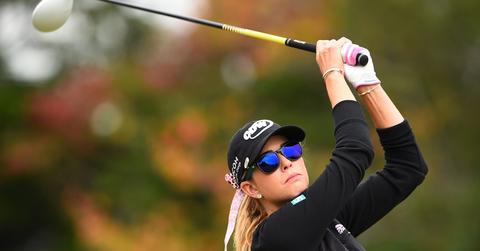
5 Keys To Practice Efficiently
You’ve had a few lessons, or maybe you’re a great golfer already, and you want to put in some time at the driving range. But what does that mean? Effective practice is about more than just whacking balls. So how do you get the most out of your practice time? As with many things in life, the first step is to get a plan.
Ask yourself the following questions:
- How much free time do I have to practice?
- How good do I want to get?
- Which part of my game needs the most attention?
With work, home, relationships and more, we’re all busy. Furthermore, we are each different physically, so each of us needs to determine her own practice routine. One option is to use a tool like the “Practice Planner” we have at MyGolfInstructor.com, which helps build practice sessions around an individual’s schedule and goals. Another way is to answer the questions above and then sit down with your pro. Believe it or not, it’s still possible to improve even if you only have a few hours a week to devote to your game, as long as you stick to your plan and maximize your time on the range. The following tips should help.
Hit even-numbered clubs one day and odd-numbered clubs the next
5 Keys to Effective and Efficient Practice
1. Prepare vs. Perfect. You prepare for the round by warming up on the range; you perfect aspects of your swing by spending time at a dedicated practice session. They are different experiences. To prepare for a round, warm up your body with dynamic stretches (such as jumping jacks) and then warm up your swing. Start with a small club and a small swing, such as chip shots with a wedge, then slowly work to pitch shots, to a full swing with irons and finally to your driver. Hitting every other club is a good way to go. Remember: allow time to get to the practice green and roll putts as well.
2. Make Practice Realistic. For dedicated practices, do not stand there and beat 500 balls in a row. We don’t do that on the golf course (thank goodness), so we don’t want to do it on the range. Instead, go through your pre-shot routine on each shot, and be sure to vary the clubs. You can even “play golf” by imagining you’re on a golf course. Hit a tee shot with your driver, then a fairway shot, then an approach shot and finally a putt. Using this sort of visualization will help to prepare you for your next round both physically and mentally.
3. The Goal is Quality, Not Quantity. Practice is about learning a new move, not repeating the same old thing over and over. Remember: it’s not a race. Each shot on the range should be preceeded with a practice swing or two, a pre-shot routine and target selection. You would be far better off going to the range and hitting 20 well-considered and different shots than rapidly firing off 100 balls in a row.
4. Don’t Leave a Man Behind (or woman). One trap I find students falling into is always hitting a favorite or “comfort” club. The problem comes on course when you have to hit a club that you’ve never worked on the range—it can mess with your psyche. Make sure to hit all your clubs on the range, especially clubs you struggle with. A good rule is to hit even-numbered clubs one day and odd-numbered clubs the next.
5. Follow the 2/3, 1/3 rule. Short game shots average around 65% of your score with putting alone accounting for 43%. This means that your practice sessions should follow the same averages. Full swing should account for only 1/3 of your practice sessions whereas putting, chipping and pitching should be at least 2/3.
